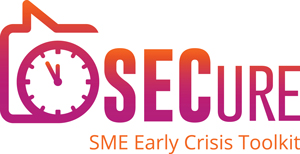“Agile project management” is an approach to managing projects that seeks out an interactive process that allows changes and improvements as required. This approach can be used in companies of any size and is used to reduce risk while ensuring flexibility in a changing environment.
Agile project management encompasses several key principles that help guide the way a team works together to achieve a bigger goal, while maintaining the flexibility to change direction and requirements in all aspects of production. It’s an ever-changing approach to managing projects that can be applied to any type of company or industry, whether it’s a project done directly with clients or whether it is an internal company project.
- What is agile project management?
- How does agile project management work?
- Challenges of agile project management
- What are the advantages of agile project management?
- When should agile project management be used?
1. What is agile project management?
Agile project management is a method of managing projects with an iterative process. This process aims to reduce risk while providing the flexibility that might be required in an ever-changing environment. Agile project management is beneficial for companies of all sizes and can be used for new or small projects as well as for large and complex projects.
2. How does agile project management work?
Agile project management is not a rigid methodology, but a flexible process that allows adjustments as the project evolves in response to new information, ideas and requirements.
This flexible approach also helps ensure that the changes made in the process do not affect the quality of the end product.
Use cases where this comes into play include smaller projects with shorter delivery times, large projects with multiple stakeholders, or projects that are subject to legal changes. Agile project management is a form of incremental and iterative development in which prototypes are first created and tested before the actual solution is implemented.
This methodology is characterized by a collaborative environment with minimal or no documentation, which enables constant customer feedback and appropriate adjustments. This avoids creating a product that only meets the initial needs of the stakeholders.
This process also promotes the creation of self-organizing teams and increased accountability.
A key feature of agile project management is the idea that no one on the team is an expert on the entire project, but is only responsible for certain aspects or tasks. This prevents overload and allows a concerted effort to get the best results.
The focus of agile project management is regular reviews to see how things are going and whether there have been any changes in the direction or in the processes. This allows the team to quickly address issues that arise, avoid cost overruns, and ensure that the end product is of high quality. Another important aspect of agile project management is that it works best with small teams, where everyone has a say in the direction of the end product.
This helps avoid power struggles and improves collaboration between team members.
3. Challenges of agile project management
The biggest challenge of agile project management is implementing this process in an organization with rigid (inflexible) systems that may not be used to the idea of constantly changing course during a project.
Agile project management also depends heavily on the team’s ability to adapt and change to new information. This means that the culture within an organization must encourage this type of behavior, otherwise progress will be hindered.
Finally, agile project management does not favor a hierarchical approach, which can be a challenge for some executives within an organization.
4. What are the advantages of agile project management?
Agile project management offers many advantages, including
- Improved quality – This is achieved by producing high quality products in less time. Since the process is constantly evolving, a high quality result is ensured,
- Time / resource savings – This process saves time and resources as it shortens delivery times and at the same time uses resources more efficiently.
- Lower risks – The constant feedback from customers throughout the process helps to identify risks early on and deal with them before they escalate or become a show stopper.
5. When should agile project management be used?
Agile project management is best suited for companies involved in projects or activities where the end result is supposed to be of high quality, but where time constraints are also important factors that need to be considered.
So, to sum up, agile project management is a great way to ensure that you get the most out of your team members and create products or projects that meet the needs of everyone involved.
It also helps identify and resolve problems early on before they affect other aspects of the project. This means that there is less chance that you will have to deal with crisis management and that the overall product quality will be better.
All information and details in our articles and information have been compiled to the best of our knowledge. However, they are provided without liability. This information cannot replace individual advice in specific cases.





